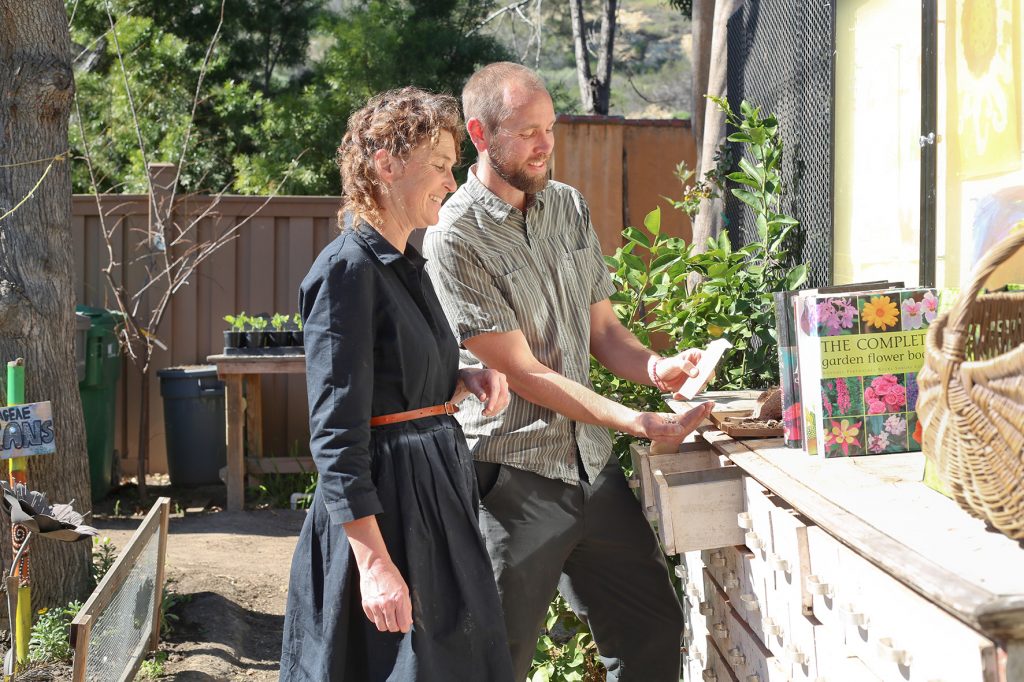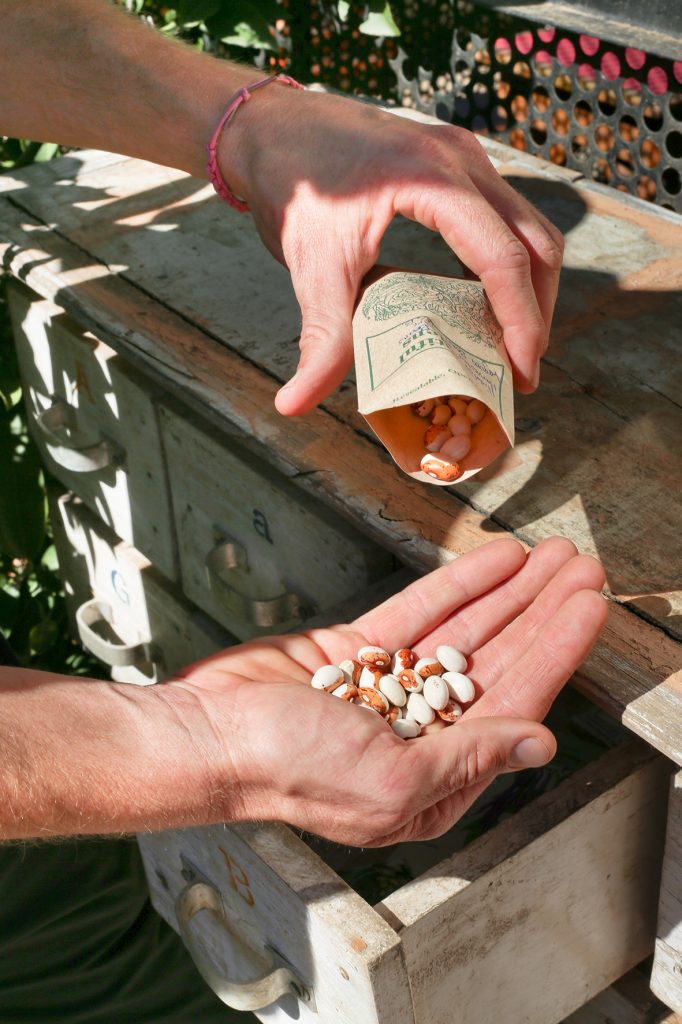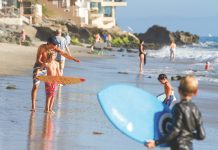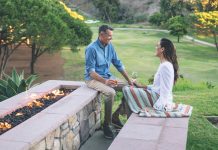Launched by a local nonprofit, the Seeds Library helps get gardens growing.
By Katherine Duncan | Photos by Jody Tiongco
When approaching the Seeds Library at Anneliese School in Laguna Canyon, you’re greeted by three little horses. The trio is primarily there to interact with the children, but they also serve another important function: creating nutrient-rich compost for the garden, which contributes seeds to the library. The entire space is designed to support the cycle of nature, from utilizing waste to supplement the soil, to cooking with the freshly harvested produce in the outdoor kitchen.
The library is just the latest addition, developed by the nonprofit Seeds Arts and Education in November 2014 to benefit the local ecosystem and connect the Laguna Beach community. It operates on an honor system—anyone may contribute or borrow seeds for free (by appointment only, for now). We spoke with Seeds President Liesa Schimmelpfennig and Anneliese School gardening teacherGreg Johansen about how to get involved, as well as best practices for springtime gardening.
Laguna Beach Magazine: What inspired you to create the Seeds Library?
Liesa Schimmelpfennig: The inspiration came from a large-scale seed swap that I attended about five years ago in Claremont. It was filled with people representing the seeds that they created from their own harvests. … I think the feeling was that we’re making a miniscule contribution to the health of our ecosystem by endorsing, supporting, seed swapping—because that’s the essence of life, seeds. And in light of the GMO movement, these seeds events—even if they start very small, such as the one that we launched—… [are] the beginning, and you have to start somewhere.
LBM: What is the process for harvesting seeds so that they can be donated?
LS: Every plant has a different process, but essentially it has to go to seed, so it has to go through its entire life cycle. For example, everybody has basil in the summer. If you let that flower completely, the seeds will have formed enough so that you can dry the plant. Typically if you hang it, it has got to be in a dry environment, preferably not direct sunlight. Then eventually, [you harvest the seeds] through various methods of extracting, whether it’s just crushing the little pod with your finger and the seed will fall out, or shaking or the pillowcase method.
LBM: What should be planted during spring?
Greg Johansen: In coastal regions, it’s a great time for any kind of fruit trees—the subtropicals, so any citrus, avocado, cherimoya. As soon as … any chance of cold weather [is] gone, you can plant potatoes as well. Red potatoes that I’ve grown here have been very good producers. I would go with any of your herbs, like chives, parsley, dill. Parsley is pretty hearty here. I would also plant cucumbers.
LBM: For those who don’t have a green thumb, can you share some tips for planting seeds?
GJ: You’re looking for soil temperature. You can use a small six-pack [of planting containers], and put it on the windowsill in your kitchen to get the greenhouse effect, warming it up to get a higher germination rate. You will usually transfer the plant to the ground after you see one or two sets of leaves. When you take it out, you want to get as much of the root system it’s already developed into the soil as possible—just treat it like it’s a newborn baby. Bury it with the crown (the tip of the green that you can see above the soil) on top of a hill, so that all around it you’ve got room for the water to sink in. You don’t want that crown under the soil. Then you definitely want to water it right then—not a deluge; again, you want to be gentle—just a little bit and again later that day.
LBM: What goals have you set for the Seeds Library in the coming months?
LS: The idea is to have a seed swap cycle published and printed. A calendar where it might be, say, the first Saturday of every month where anybody from the community or surrounding areas can come and visit the seed swap and exchange. And we will probably always have some [educational] lecture or some talk as a component. I think eventually we’re hoping to partner with other organizations on the West Coast … and have maybe a festival or some kind of symposium.







